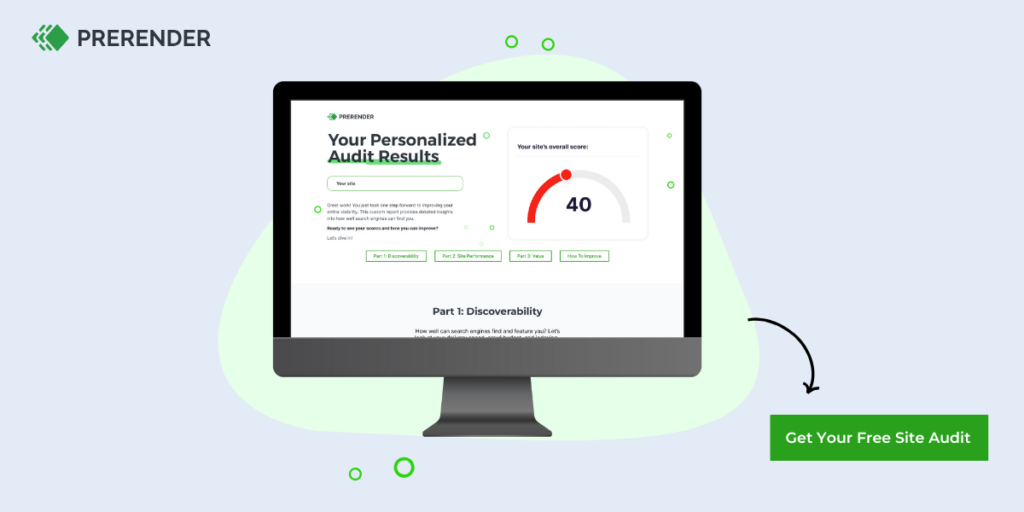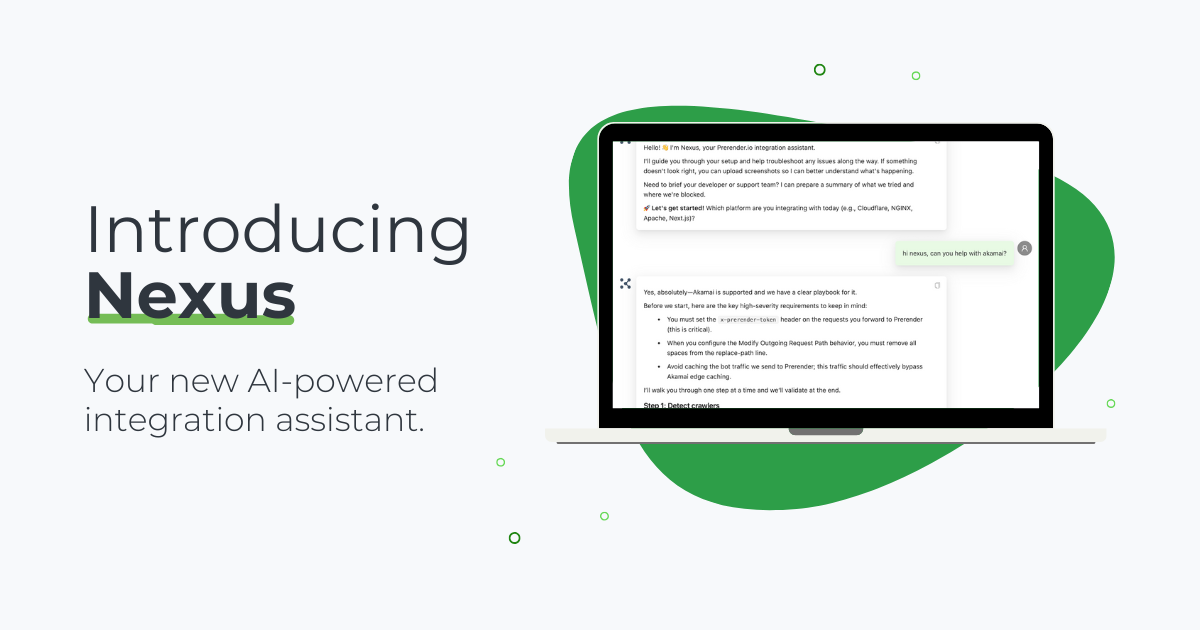From blogs to social media promotions, artificial intelligence (AI) has become a go-to for many businesses wanting to streamline their content production. While AI offers great advantages, content made with AI tools often faces delays in getting indexed. This applies not only to content that is fully written by AI but also to content that is optimized through AI assistance.
If you’re looking for practical tips to solve the slow indexing performance of your AI-generated content, this AI SEO guide is for you. We’ll share six common reasons your AI content isn’t featured in traditional search engines (like Google) or AI search platforms (like ChatGPT). Additionally, we’ll teach you how to make AI content more SEO-friendly for higher traffic and better conversions.
AI Search Engines Reliance on SERPs and AI SEO Optimization
Before we go straight to why your AI-made content isn’t featured on search results, remember that some AI search platforms still rely on traditional search engines for their data source. They gather the SERP data, train their LLM models, and use the accumulated information to answer users’ search queries.
This means that besides the exclusive AI SEO optimization strategy, the traditional SEO optimization tactics are still highly relevant to ensure AI engines love your AI-generated content.
So, here are some common reasons Google or ChatGPT isn’t indexing your AI-generated content (or is taking its time), plus how to fix them.
1. Lack of Crawl Budget Prevents Content Indexing
One major factor that might be holding back your AI-generated content from being indexed is your site’s crawl budget health.
Crawl budget refers to the limited number of pages Google can and wants to crawl on your site within a given timeframe. Once your crawl budget is depleted, Google will stop its crawling and indexing process, and your content will not appear in the search results.
This situation is more prone to large websites than smaller ones, as you’re likely to have more pages and content (including those assisted by AI tools) waiting to be indexed than your crawl limit.
But how does a lack of crawl budget impact AI content indexing? As mentioned, some AI search engines and platforms still use the results of traditional search engines (meaning: SERPS) to collect and train information used to answer users’ queries. This means that if Google doesn’t index your content in the first place, it won’t appear on the AI platforms either.
Solutions on How to Improve Your Crawl Budget for Better AI Content Indexing
Optimize your crawl budget by focusing on and prioritizing quality, high-value pages over quantity. To set which pages Google should and should not crawl and index, you can use the robots.txt allow/disallow technique.
Furthermore, consider blocking low-value pages (like category filters or redundant tags) and allow access to pages that impact your bottom line. After setting the robots.txt files, use tools like Google Search Console to monitor your crawl stats. Get our comprehensive guide on how to use robots.txt files best here.
2. Duplicate or Thin Content Penalties for AI-Generated Content
Although artificial intelligence is revolutionizing how content is created, relying solely on an “AI-only” strategy raises important questions about how search engines index content written with AI tools. For example, many SEOs and marketing managers are wondering, “Does Google index AI-generated content?” and “Is AI-generated text considered duplicate content?”
The answers to these questions are: “Yes, Google still indexes AI-generated content,” and “No, AI-generated content isn’t automatically considered duplicate content.” However, it’s important to note that AI has a higher potential to produce duplicated or low-quality (“thin”) content. Because of this, Google can de-prioritize crawling your AI content and will not index AI content that lacks substance and originality.
Google seems to have adopted a neutral stance on AI-generated content. According to this Google Search Central article, the search engine giant is less concerned about the content’s origin and more focused on its quality. This suggests that AI can be a tool to create valuable content as long as it meets Google’s standards.
That said, it’s recommended that you take this information with a grain of salt. You should not rely heavily on fully AI-generated content, as AI content is often not unique, impacting how Google values your page and overall site quality.
Solutions on How to Avoid Having Thin or Duplicated AI-Written Content
To discover duplicate content on your ecommerce site, run an SEO audit using tools like Screaming Frog. It will show you the percentage of your duplicate, common, and unique content. Not a fan of Screaming Frog? Try these Screaming Frog alternatives.
Go through the duplicated content findings and tweak the content to be unique. If the duplication issues are not caused by similar content messages but by technical issues, such as URL parameters, localization, or Hreflang, this duplicate content optimization tutorial blog will help you.
Additionally, create AI-generated content that is up to Google’s standards, worth indexing, and ranks highly. To do this, you can ensure that the content is relevant to its search intent, provides original and unique information, showcases trustworthiness, and the site has excellent Core Web Vitals scores. This ‘How Google Defines Quality Content for Indexing’ will tell you how to achieve all.
3. Technical SEO Issues Often Found on Content Made with AI
Even the highest-quality AI-generated content can suffer indexing problems if search engines encounter technical SEO issues. These include:
- Poor site performance
A slow-loading site not only frustrates users but also discourages search engines from indexing your artificial intelligence content. This is because Google has clarified that PageSpeed is a ranking factor, making pages that load slowly less likely to be crawled and indexed quickly.
- Broken links
Broken links can create a poor user experience and hinder search engines’ ability to crawl your site efficiently. These broken links, such as 404 errors, signal to search engines that your site may be poorly maintained.
- Improper robots.txt configuration
The robots.txt file is a critical tool for guiding search engines on which pages to crawl and which to ignore. Misconfigurations can accidentally block important pages from being indexed.
If you own an ecommerce site and want to optimize your robots.txt files, this blog can help.
- Faulty sitemaps
An outdated or incorrectly formatted sitemap can prevent Google from discovering your new content.
- JavaScript rendering
JavaScript is notoriously tough for search engines, and AI crawlers can’t render JavaScript at all. Along with slow crawling and poor indexing, other signs of poor JS rendering include link previews that fail to load or sudden drops in traffic (that aren’t a core update).
Solutions on How to Mitigate Common Technical SEO Challenges for AI Content
Here are a few techniques to solve technical SEO issues that can occur with artificial intelligence content:
- Conduct a web performance audit of your ecommerce site to monitor its page site performance. Tools like Google PageSpeed Insights are a great solution to start.
- To fix 404 errors, you can redirect the broken URLs to a stand-alone 404 error page or implement error boundary components using this code: <Route path=”*” component={NotFound} />. Follow our tutorial on how to solve 404 errors to get the details.
Update your sitemaps regularly and prioritize recently modified pages by listing them first based on their last modification date. This will nudge crawlers to index your freshest pages efficiently.
4. Weak Google E-E-A-T Signals
Google evaluates content quality and reliability using the E-E-A-T standard, which stands for experience, expertise, authoritativeness, and trustworthiness. This standard helps Google ensure that the content it promotes is credible and valuable to users.
Human-generated content often reflects personal experience, specialized knowledge, and trustworthiness, which are crucial for high E-E-A-T ratings. In contrast, AI-generated content, while quick and efficient, typically lacks the depth and nuance provided by human experience and expertise. This can make it challenging to signal high E-E-A-T to Google’s algorithms convincingly.
As a result, sites that consistently rely heavily on artificial intelligence content may be at risk of a Google penalty—being deprioritized in its indexing process.
Solutions on How to Improve the EEAT Signals of AI-made Content
To boost your chances of faster indexing, enhance AI content with genuine human expertise and authority signals. Use AI tools to handle the heavy lifting, like generating outlines, but always add human touch. This way, you’re not just creating content for the sake of it but to build a reliable, authoritative voice that Google and your audience will trust.
5. Lack of Internal Linking Can Impact Your AI SEO Power
Internal links are a crucial aspect of SEO that directly impacts how search engines crawl, index, and rank your content. This is evidenced in the current information shared on Google Search Console Insights.
In simple words, internal links act as a roadmap that guides search engines through your site. Without this roadmap, search engines might struggle to discover new content, potentially leading to slow indexing problems or even non-indexing of this content.
Solutions on How to Optimize Internal Links
Start by linking your new content from relevant existing pages. For example, if you have an older blog post on a similar topic, add a link to your new content. Use descriptive anchor text that tells search engines what the linked page is about. Additionally, minimize internal links above the fold and avoid excessive linking throughout your content.
Adding internal links not only helps with indexing but also enhances user experience by providing your audience with additional resources to explore.
6. Poor User Experience
A good content isn’t just about delivering the most relevant information, but it should also be reader-friendly. Unfortunately, AI content generated without any human touch usually doesn’t factor in user experience. For instance, AI doesn’t analyze search intent to understand what’s ranking or consider how to plan, structure, and format the page for optimal user experience. Humans do that.
So, if you simply copy and paste AI-generated content onto your website without thoughtful editing, your content may struggle to index.
Furthermore, the poor reader experience can increase the bounce rates, which signal to search engines that your site isn’t providing value. This can be a significant factor in why your AI-generated content isn’t being indexed as fast as you’d like.
Related: Learn how to improve your ecommerce store’s mobile user experience by following these expert tips.
Solutions on How to Enhance User Engagement on AI-Written Blogs
Provide a positive experience by keeping users engaged and reducing bounce rates. This will indirectly influence how quickly your content gets indexed. To ensure reader-friendly AI-generated content, you can use content auditing tools such as Hemmingway Editor or Readable.
How Prerender.io Speeds Up Indexing—AI-Written or Not
AI-generated content already presents indexing challenges. These issues are amplified when your website relies heavily on JavaScript. Due to the two-step JS rendering process, JavaScript-based sites often need more time to complete indexing. To overcome this hurdle, many SEO managers and website owners leverage tools like Prerender.io—a technical SEO tool for rendering content.
With Prerender in your technical SEO tool arsenal, you won’t rely solely on Google’s crawling algorithms to ensure your AI content shows up on SERPs. Here is how Prerender works.
Prerender employs a dynamic rendering SEO approach to render your pages ahead of time, saving them as cache and feeding them to search engine crawlers upon request. By doing so, search engines bypass the need to render pages themselves, speeding up the indexing process while ensuring no content is left uncrawled.
These technical optimization strategies not only empower you to achieve faster indexing and boost your site’s visibility, organic traffic, and user engagement but also allow you to allocate your crawl budget efficiently, focusing on high-value pages.
Watch the video below for a quick overview of how it works.
Fix AI Content Slow Indexing Problems with Prerender.io
Artificial intelligence can significantly boost content production, but ensuring its visibility requires careful optimization. To overcome AI content indexing challenges, especially on JavaScript-heavy websites, consider Prerender.
Our dynamic rendering solution has helped over 65,000 businesses, including Haarshop, improve crawl efficiency and indexing success by up to 30%. This resulted in a more than 50% increase in organic traffic.
Sign up for Prerender today and unlock the full potential of your AI content.
FAQs – How to Optimize AI Content for Faster Indexing
Why Isn’t My AI Content Showing up in Google or ChatGPT?
There are several possible reasons your AI content doesn’t appear on Google or ChatGPT. This includes poor content quality (optimize it with semantics and embedding optimization techniques), lack of crawl budget (prevents it from being indexed), and some technical AI SEO issues (such as poor site performance and hidden content because of JavaScript rendering). Learn more about AI content and its indexing issues here.
Does Google Index AI-Generated Blogs?
Generally, Google indexes AI-generated blogs and other content types. Based on the Google Search Central document, Google rewards high-quality content, no matter how it is produced. That means, as long as your AI-written content is well-written and meets Google standards, it will get indexed.
How Can I Get AI-Generated Content Indexed Faster?
To make AI-generated content indexed faster, you need to optimize its quality and your site performance. Ensure that the AI-made content is high-quality, informative, as well as semantically and embedding optimized. Here’s how to avoid low-quality signals with AI content. Additionally, improve your site’s technical AI SEO performance, such as PageSpeed, schema markup, website structure, and internal linking. Use these AI technical SEO tools to help.
Does AI Content Hurt SEO Indexing?
Generally, AI content doesn’t hurt SEO indexing. However, if you publish many poorly written AI content that doesn’t get indexed, it signals Google that your site is not trustworthy, and therefore, can negatively affect your overall SEO performance.
How Can I Tell If My Site Has Performance Issues That Prevent Indexing?
You might have technical issues behind the scenes that impact your indexing, crawling, and overall SEO performance. To see if your site is impacted, try our free site audit tool for a personalized report. Simply enter your domain and email and get your results instantly.




